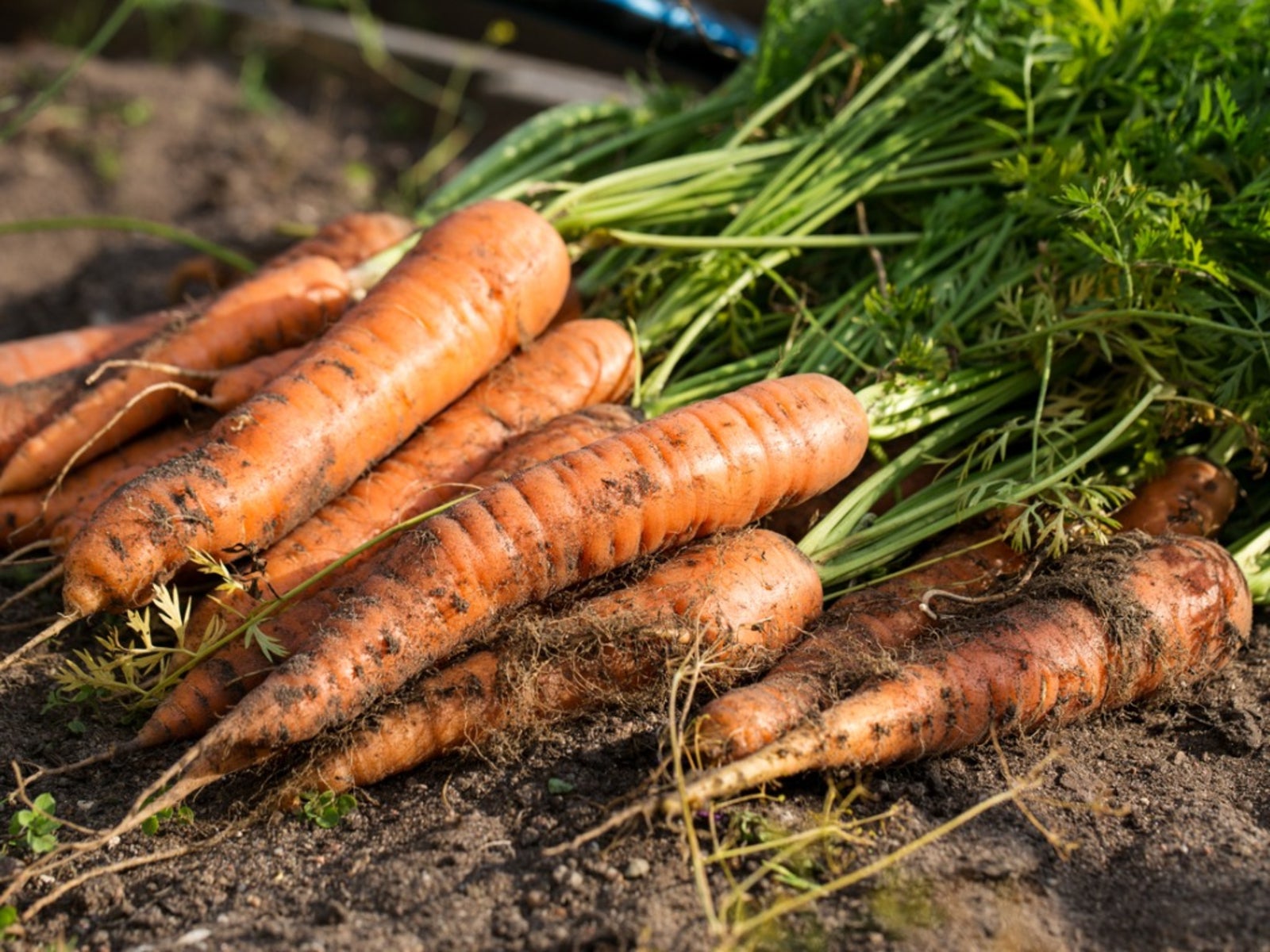Carrot Disease Management: Learn About Diseases Affecting Carrots


Although the cultural problems growing carrots may outweigh any disease problems, these root vegetables are susceptible to some common carrot diseases. Because the edible parts of the carrots you grow are hidden below ground, they can become infected with disease that you may not notice until you harvest your crop. But if you watch your growing carrots carefully, you may detect disease symptoms that often show themselves above ground.
Common Carrot Diseases at a Glance
Carrot diseases may stem from fungal, bacterial or other causes. Here are some of the more frequent issues you may come across.
Fungal Diseases
Crown and root rots are caused by Rhizoctonia and Pythium spp. pathogens. Common symptoms to look for are the tops of carrot roots turning mushy and rotting, and the foliage may die to the ground as well. Roots also become stunted or forked. Leaf spot is typically caused by Cercospora spp. pathogens. Symptoms of this fungal ailment are dark, circular spots with yellow halos on carrot leaves. Leaf blight caused from Alternaria spp. pathogens will have irregularly shaped brownish-black areas with yellow centers on carrot foliage. Powdery mildew fungus (Erysiphe spp. pathogens) is fairly easy to notice as plants will typically exhibit white, cottony growths on the leaves and stems.
Bacterial Diseases
Bacterial leaf spot is caused from Pseudomonas and Xanthomonas spp. pathogens. Early symptoms are yellow areas on leaves and stems that become brown in the middle. Advanced symptoms are brown streaks on the leaves and stems that may have yellow halos.
Mycoplasma Diseases
Aster yellows is a conditions that includes yellowing foliage, excessive foliage growth and a bunching habit of the leaves. Carrot roots will also taste bitter.
Carrot Disease Management
Preventing carrot diseases is easier than treating them. Whether a disease is caused by a fungal or bacterial pathogen, once the disease has taken hold, it’s difficult to treat it.
- Carrot disease management is a multi-pronged effort that begins with choosing a site that has well-draining soil. Evenly moist soil is good for healthy carrot growth, but soggy soil that holds water promotes root and crown rot diseases.
- Another essential step in carrot disease management is choosing carrot cultivars that are resistant to certain diseases.
- Diseases affecting carrots, regardless of the pathogen, overwinter in the soil and can infect next season’s crop. Practice crop rotation, which is simply planting a different crop, such as tomatoes, in the same area where you planted carrots the year before. If possible, don’t plant carrots in the same spot for at least three years.
- Keep weeds at bay, because some diseases, such as aster yellows, are transmitted by leafhoppers, which are insects that lay their eggs on nearby weeds.
- Don’t forget that carrots are cool-season crops, which means that many problems growing carrots happen if you try to grow them as a warm-season crop.
If you do use chemicals for treating carrot diseases, be sure to read the product labels and follow all recommendations. Most chemical controls are preventive, not curative. This means that they typically control diseases if you use them before a disease takes hold. This is a particularly suitable method of treating carrot diseases if you had a problem last year. Some diseases affecting carrots cause symptoms that look like other diseases, as well as problems that are not disease-related. So if you do use chemical controls, it’s essential that you’ve properly diagnosed the cause of a disease. If you’re unsure whether your carrots have a disease or simply a cultural-related problem, consult your local Extension Service.
Sign up for the Gardening Know How newsletter today and receive a free copy of our e-book "How to Grow Delicious Tomatoes".

Victoria Blackstone is a guest writer for Gardening Know How.